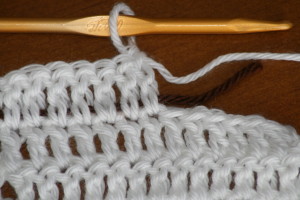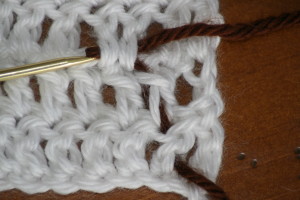 Weave in all ends. Simple statement written at the end of almost every pattern, yet if you get a group of crocheters together you often find many different answers to how this is done. I have been on a personal mission to see if there is any consensus on this topic, and on my journey have found many opinions, thoughts and rationale for various approaches. Here are a few with their pros and cons, so that you can undertake a personal reflection and see what works best for your style of crochet.
Weave in all ends. Simple statement written at the end of almost every pattern, yet if you get a group of crocheters together you often find many different answers to how this is done. I have been on a personal mission to see if there is any consensus on this topic, and on my journey have found many opinions, thoughts and rationale for various approaches. Here are a few with their pros and cons, so that you can undertake a personal reflection and see what works best for your style of crochet.
First I need to have a long enough end. I admit yarn is precious so I don’t want to waste too much that I will just be weaving in, or cutting to throw away. So yes, I have had short ends in some of my earlier work. I look at those pieces now and shake my head; the ends never stay hidden, regardless of which technique I try, the only thing that I can do to fix them is to pull out a needle and sewing thread and attempt to sew them down. I’m not a seamstress, sewing is not the reason I crochet, so I have learned my lesson, I leave an end of at least six inches in length, anything less is just asking for trouble.

Crocheting over the ends
Personally I have hated weaving in ends, so I have crocheted over ends whenever possible, this is quick and easy, but not exactly un-obvious. It does create a small ridge in the stitches that are crocheting over the end, and it is not very secure. If you give the fabric a good tug the end slides, and sometimes works itself out. Not to mention that the end is noticeable on the wrong side of the row, especially if it is a color change. Okay, so maybe this is not the best approach.
So maybe I should attempt weaving in, but I don’t want to get a tapestry needle. I take my hook and insert it through some stitches and pull the tail through. I don’t have to get up and find my needles and I am weaving in the ends not crocheting over them, but this is a little time consuming and the end looks obvious in some places as it sometimes is on the surface of the fabric entering into the side of a stitch. So unless I’m in a pinch on a personal item (that I don’t care about its appearance) I should probably stay away from this approach as well.
I guess I have to get the tapestry needle, now what. I can go straight across the rows, through the stitches but this gets me similar results to crocheting over them, if I give the fabric a tug it pulls out. So I ask around. I find people (even knitters) that have used some approach similar to those that I have attempted above, but then I find out some interesting tricks…work the weaving vertically through the stitches instead of horizontally, they are hidden better. But you can’t just stop there, you work the end in one direction for half the length on the end and then turn around and go back the other way, this will stop it from sliding out when the fabric is tugged. Genius! Why have I not found this before? Probably because crochet is as diverse as the people who love to do it. There is more than one right answer, so you have to find what works for you. I am sure that I have not found out all the tricks, more will be discovered, but at least for now I can hide an end and not have it slip out, since any good finishing should not be noticeable and should stay where it is put.
(To see a more in depth article, it is available in the CGOA Autumn newsletter)

